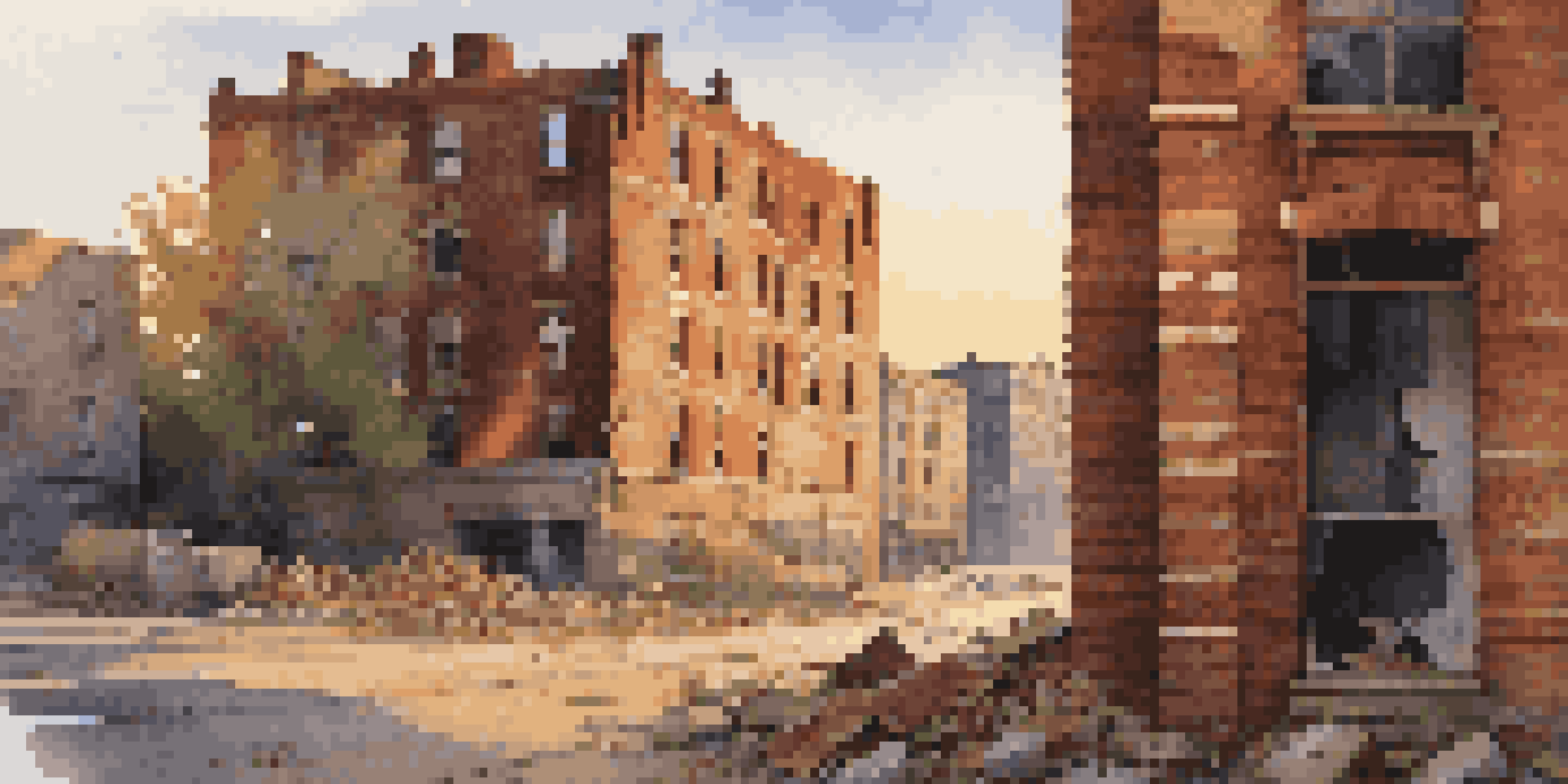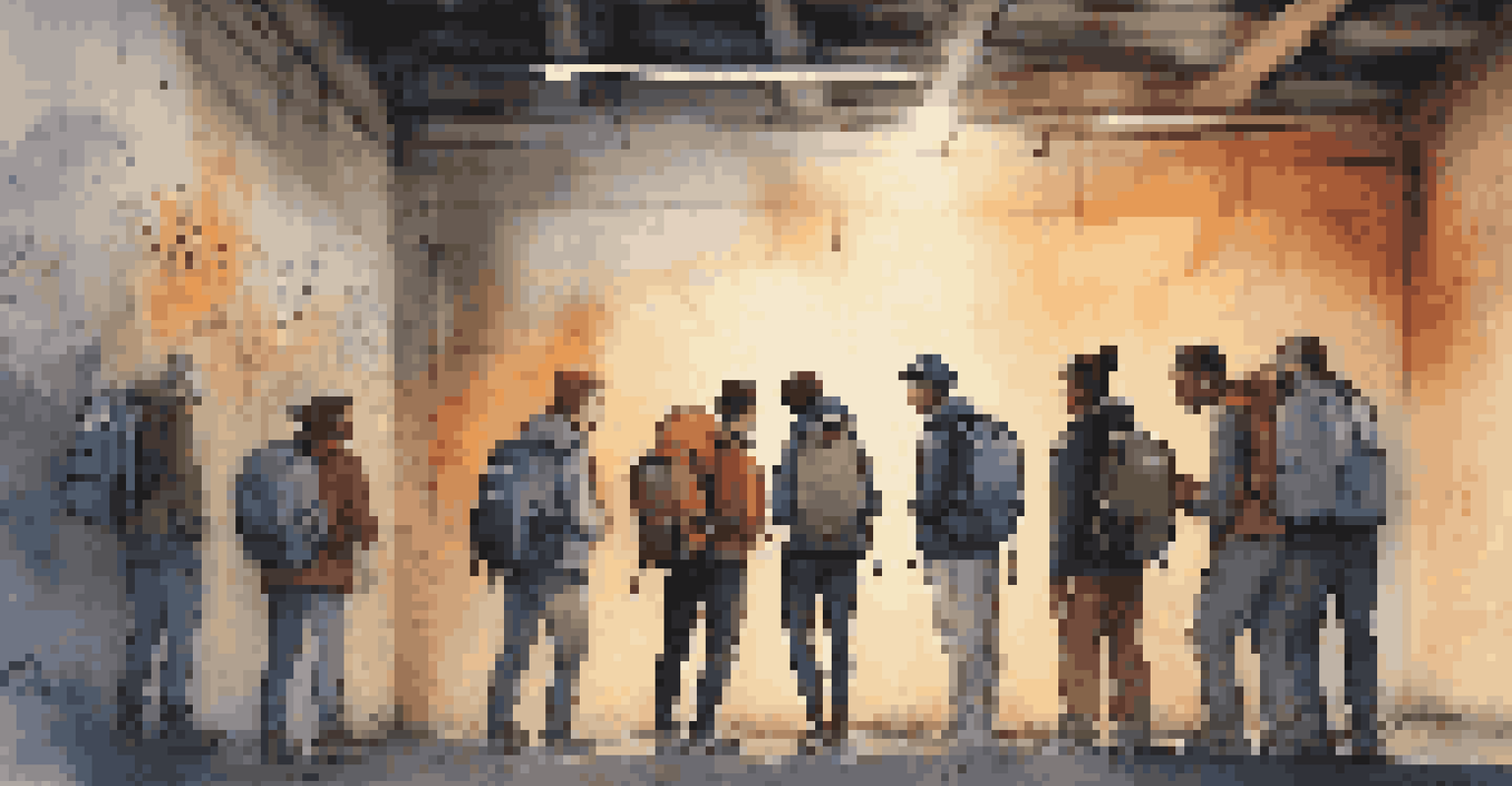The Challenges of Urban Exploration: What to Expect

Understanding the Risks of Urban Exploration
Urban exploration, often called 'urbex,' can be thrilling but comes with its own set of risks. From unstable structures to hazardous materials, explorers must be aware of their surroundings. It's not just about the excitement; safety should always be a priority.
Exploration knows no bounds, but respect for the places we explore is paramount.
For instance, abandoned buildings may have crumbling walls or broken glass that can pose serious dangers. Additionally, you might encounter wildlife or even hostile individuals in some areas. Thus, being prepared for these risks can make your exploration safer and more enjoyable.
Always wear appropriate gear, such as sturdy shoes and gloves, to protect yourself from potential hazards. A first-aid kit can also be a lifesaver in case of minor injuries. Remember, a little preparation goes a long way in urban exploration.
Legal Implications: Know Your Rights
One of the biggest challenges urban explorers face is navigating the legal landscape. Trespassing laws vary by location, and it’s crucial to understand them before you venture out. Ignoring these laws can lead to fines or even arrest, making your adventure much less enjoyable.

For example, some locations may be privately owned, while others could be protected historical sites. Researching beforehand can help you identify which places are permissible to explore and which ones to avoid. This way, you can enjoy your explorations without the worry of legal repercussions.
Safety First in Urban Exploration
Explorers must prioritize safety by being aware of environmental hazards and wearing appropriate gear.
Consider reaching out to local urban exploration communities for insight on legal spots and best practices. They often have valuable information that can help you stay on the right side of the law while still enjoying your adventure.
Navigating Environmental Hazards
Urban environments can be unpredictable, with various environmental hazards lurking around every corner. From toxic mold in abandoned buildings to loose electrical wiring, it’s essential to stay vigilant. Being aware of these hazards can help you avoid potentially dangerous situations.
Safety isn't just a priority; it's a way of life when exploring the unknown.
For instance, some sites may contain asbestos or other harmful materials that can pose serious health risks. Always research the location and its history to better understand what you might encounter. This knowledge can inform your decisions and keep you safe during your explorations.
Bringing a mask or respirator, especially in older buildings, is a good precaution. A flashlight and a reliable source of information about the site can also help you navigate through these hazards more effectively.
Physical Challenges: Staying Fit and Agile
Urban exploration often requires a good level of physical fitness, as you may need to climb, crawl, or maneuver through tight spaces. This can be particularly challenging in abandoned warehouses or factories where debris is common. Maintaining your fitness can significantly enhance your urban exploration experience.
For example, if you find yourself needing to climb a set of rusty stairs or duck under a low beam, being physically prepared becomes essential. Regular exercise and flexibility training can help you navigate these environments more easily and safely.
Understand Legal Boundaries
Navigating trespassing laws is crucial to avoid fines or legal issues while exploring.
Moreover, it's vital to listen to your body and know your limits. If you're feeling fatigued or unsure about a climb, it’s perfectly okay to turn back. Successful urban explorers know that sometimes, discretion is the better part of valor.
Emotional and Mental Preparedness
Urban exploration can evoke a wide range of emotions, from excitement to anxiety. The thrill of discovering something new can be exhilarating, but it's important to remain mentally grounded. Understanding your emotional responses can help you navigate the ups and downs of exploring.
For instance, you might feel a rush of adrenaline when entering a new site, but that can quickly turn into fear if you encounter unexpected obstacles. Having strategies in place to manage these feelings can enhance your experience. Techniques like deep breathing or mindfulness can keep you calm and focused.
Additionally, exploring with a buddy can provide emotional support and make the experience more enjoyable. Having someone to share your discoveries with often makes the journey feel less daunting and more rewarding.
Finding Community and Connection
One of the most rewarding aspects of urban exploration is the sense of community it fosters. Many explorers share their experiences and findings online, creating a network of like-minded individuals. Connecting with others can provide valuable insights and enhance your exploration adventures.
Joining local urbex groups or online forums can open doors to new locations and experiences. These communities often share tips on safety, legal issues, and even photography techniques for capturing your explorations. Engaging with others can enrich your time spent exploring urban landscapes.
Community Enriches Exploration
Connecting with fellow urban explorers enhances experiences and provides valuable insights.
Moreover, having a community can lead to group explorations, which can be both safer and more fun. Shared experiences often create lasting friendships and unforgettable memories, making urban exploration even more fulfilling.
The Importance of Respect and Preservation
As urban explorers, it’s crucial to approach sites with respect and care. Many locations hold historical significance and deserve to be preserved for future generations. Being mindful of your impact can help ensure that these sites remain accessible for others to explore.
For instance, avoid vandalism or removing items from the site, as this can damage the integrity of the location. Instead, consider documenting your explorations through photography or writing, which allows you to share your experience without causing harm.

By respecting the places you explore, you contribute to a wider culture of preservation. This mindset not only benefits the sites themselves but also promotes a positive image of urban exploration as a whole.